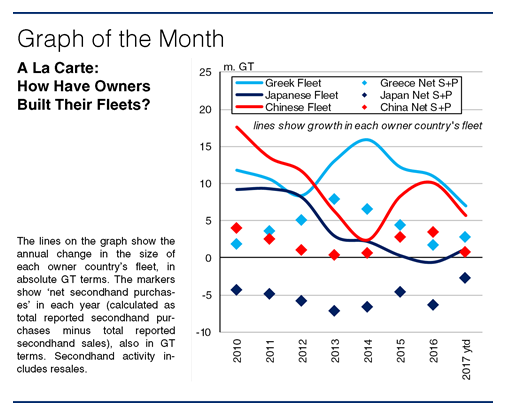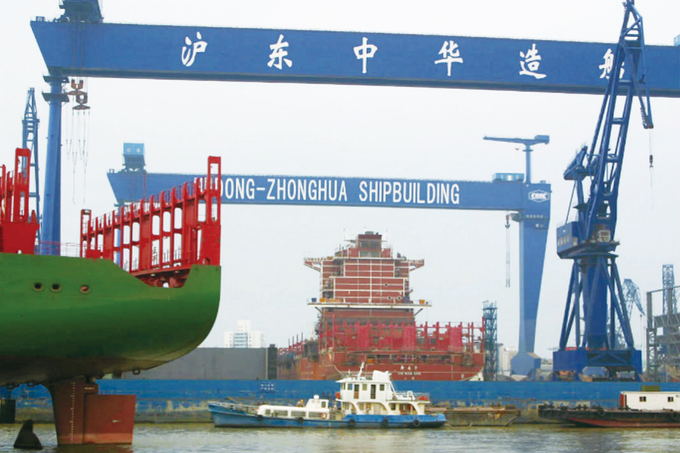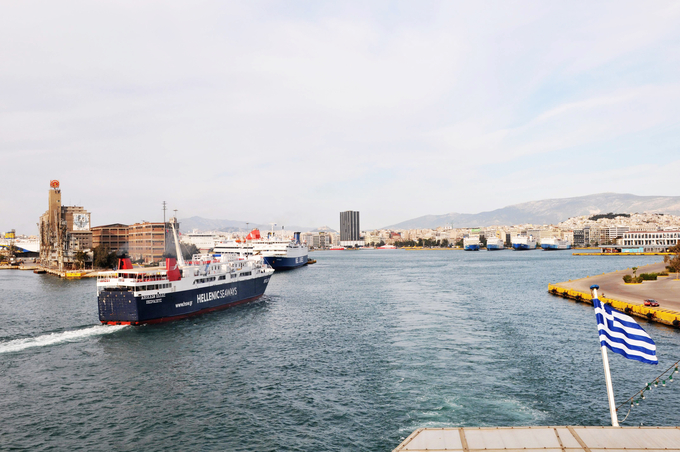
Last month’s Fleet Analysis examined how fast the top owner nations’ fleets have grown since 2010, with most of the major owner countries adding a huge volume of tonnage. However, the composition of fleet growth has been diverse. Faced with a varied selection of newbuild and secondhand vessels, Greek, Japanese and Chinese owners have each opted for different recipes.
The world fleet has grown by 397m GT since the start of 2010, with half of this growth accounted for by the ‘big 3’ owner nations of Greece, Japan and China. A total of 603m GT has been delivered into the fleet during this period, while 199m GT has been scrapped. However, some owner countries have relied more on the secondhand market rather than newbuildings to grow their fleets. A total of 300m GT has been reported sold secondhand since January 2010, equivalent to 34% of the world fleet at the start of the period.

The Greek owned fleet has grown the most of any owner nation since January 2010, with 90.0m GT of tonnage added, an increase of 59%. Greek owners have traditionally been the biggest players in the secondhand market, reflected in the composition of recent fleet growth. Since the start of 2010, ‘net purchases’ (total reported secondhand purchases minus secondhand sales) by Greek owners have totalled 33.6m GT, equivalent to 37% of total fleet growth. However, Greek net purchases fell to less than 2.0m GT in 2016, with deliveries making up a larger share of fleet expansion.
Japanese owners have opted for a very different mix, with much lower overall fleet growth than among Greek or Chinese owners. Japanese owners have taken delivery of 69.4m GT since the start of 2010, while ‘net sales’ have totalled 43.0m GT. As a result, although the Japanese owned fleet grew by 26.6m GT from 2010 to 2012, it has since only increased by 6.0m GT. However, this trend looks set to change, following 429 orders of 21.9m GT by Japanese owners in 2015. This was driven by a sudden increase in orders for large boxships and tankers, predominantly due for delivery in the remainder of 2017 and 2018.

Growth in the Chinese owned fleet slowed from 17.6m GT in 2010 to 2.4m GT in 2014, before accelerating again in 2015. The slowdown mirrored a drop in newbuilding activity, following 50.9m GT of deliveries in the period 2010-13. Recently, secondhand activity has been more important, with ‘net purchases’ by Chinese owners reaching 3.4m GT in 2016, the highest total of any owner nation. Bulkers and containership accounted for 66% and 21% of total secondhand purchases respectively in GT terms.
So fleet growth has been driven by different blends of activity across nations, with Japanese owners more focussed on newbuildings and Greek owners on secondhand purchases. These trends can impact on the extent of expansion in a owner country’s fleet too, but also illustrate that, for owners, there’s clearly more than once choice available on the menu.
(Source : Clarkson Research Services Limited)

















